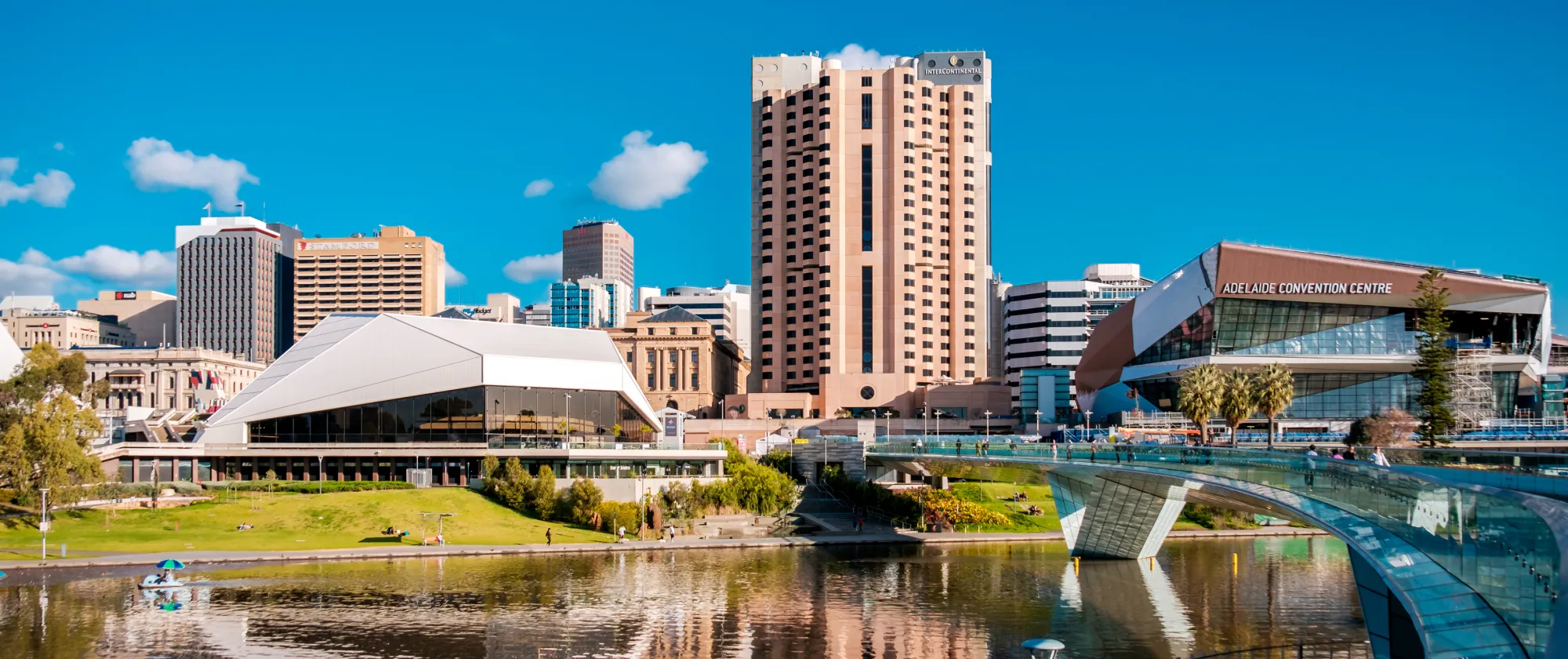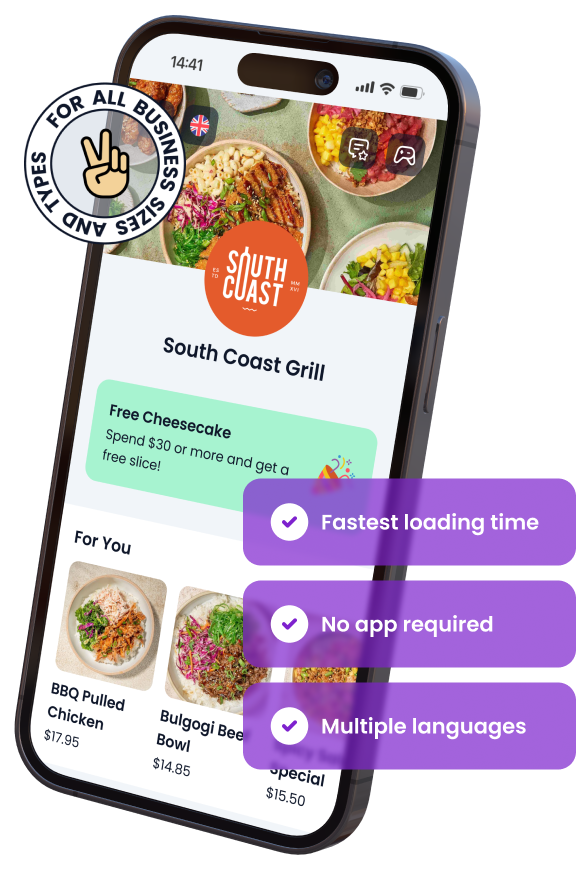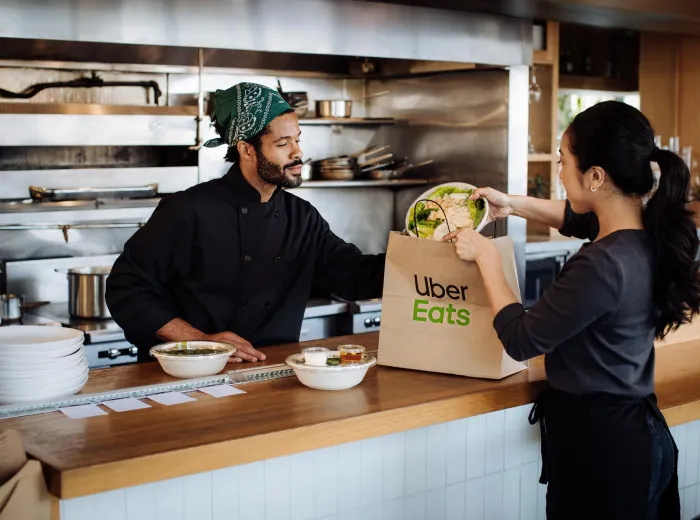

12 Steps to Take Before Opening a Restaurant in Adelaide
Opening a restaurant in Adelaide can be an exciting and rewarding venture, but it requires careful planning, thorough research, and strict adherence to local regulations. From securing the perfect location to obtaining the right permits, every step plays a crucial role in setting up a successful establishment. Adelaide’s vibrant dining scene offers plenty of opportunities, whether you’re launching a fine dining restaurant, a trendy café, or a fast-casual eatery. However, competition is fierce, and making the right decisions from the start can make all the difference.
Before you dive into the restaurant industry, you need to navigate several key areas, including business registration, financial planning, staff hiring, and menu development. Securing reliable suppliers, marketing your brand effectively, and ensuring compliance with South Australia’s food safety regulations are just as important. Without a solid foundation, even the best restaurant ideas can struggle to succeed.
This guide walks you through the 12 critical steps you must take before opening a restaurant in Adelaide. Whether you’re a first-time restaurateur or an experienced business owner expanding to a new location, following these steps will help you minimize risks, control costs, and maximize your chances of long-term success.
Research and Planning for Your Restaurant
Thorough research and careful planning are the foundation of a successful restaurant in Adelaide. Before investing time and money, you must understand your target market, evaluate competitors, and refine your restaurant concept. A well-structured business plan will serve as your roadmap, guiding you through every stage of opening and running your establishment efficiently.
Conduct Market Research on Adelaide’s Restaurant Scene
Before committing to your restaurant idea, you need to assess whether there is sufficient demand in Adelaide’s dining landscape. Market research helps you identify your potential customers, competitors, and industry trends.
Key Areas to Research:
- Target Audience: Identify key demographics, including age, income levels, and dining preferences.
- Competition Analysis: Study existing restaurants in your chosen area—what are their strengths and weaknesses?
- Food Trends: Explore current and emerging dining trends in Adelaide, such as plant-based menus, sustainable dining, or fusion cuisines.
- Seasonal Demand: Consider how tourism and local events affect restaurant traffic in different months.
Gathering these insights will help you refine your restaurant concept, making it more attractive to your target audience and competitive in the local market.
Choose the Right Restaurant Concept
Your restaurant concept defines the type of dining experience you offer and sets the foundation for branding, menu design, and pricing.
Factors to Consider:
- Cuisine Type: Will you serve international cuisine, local specialties, or a niche menu (e.g., vegan, organic, or seafood-focused)?
- Dining Style: Decide whether your restaurant will be fine dining, casual dining, fast food, or a hybrid concept like a café-bistro.
- Ambience & Theme: Your interior design, music, and overall atmosphere should match your target market’s expectations.
- Competitive Advantage: What makes your restaurant different from others in Adelaide? Unique menu offerings, exceptional service, or a standout location?
Choosing the right concept ensures that your restaurant appeals to the right audience and meets a specific demand in the market.
Create a Solid Business Plan
A well-structured business plan is essential for securing funding, guiding operations, and preparing for potential challenges. It acts as a blueprint for your restaurant’s success.
Essential Sections in Your Business Plan:
- Executive Summary: A brief overview of your restaurant concept, mission, and goals.
- Market and Competitor Analysis: Detailed research on your target market and competing restaurants.
- Menu Development & Pricing Strategy: Outline your key menu offerings and price structure based on costs and perceived value.
- Location Strategy: Explain why you chose a specific area in Adelaide for your restaurant.
- Financial Projections: Include estimated startup costs, projected revenue, and expected profit margins.
- Marketing Plan: Describe how you will promote your restaurant through digital marketing, social media, and local partnerships.
- Operational Plan: Define daily processes, staffing needs, and supplier partnerships.
A comprehensive business plan helps you stay focused and increases your chances of attracting investors or securing a bank loan. It also provides a clear roadmap for your restaurant’s launch and long-term growth.
Securing the Right Location in Adelaide
Choosing the right location is one of the most critical decisions when opening a restaurant in Adelaide. A prime location can drive foot traffic, attract your target customers, and contribute to your restaurant’s overall success. However, selecting the wrong spot can lead to financial struggles, even if your food and service are exceptional. You need to assess several factors, including foot traffic, competition, zoning laws, and lease terms, to make an informed decision.
Factors to Consider When Choosing a Location
The success of your restaurant depends largely on where it is located. An ideal location should align with your restaurant concept and attract your intended customer base.
Key Considerations for Selecting the Right Spot:
- Foot Traffic & Visibility: Locations in busy shopping areas, business districts, or near entertainment hubs will naturally draw more customers.
- Target Market Accessibility: Ensure that your chosen area is frequented by your ideal customers (e.g., families, young professionals, students).
- Proximity to Competitors: Being too close to direct competitors can be risky, but positioning near complementary businesses (e.g., coffee shops near offices) can be beneficial.
- Parking & Public Transport: Customers should have easy access to parking or nearby public transportation.
- Safety & Security: Consider crime rates and overall safety, as these factors influence customer perception and staff well-being.
- Delivery & Takeaway Potential: If you plan to offer delivery services, ensure that the area supports a strong demand for online orders.
Selecting a strategic location based on these factors will improve your restaurant’s visibility and ensure long-term profitability.
Understanding Adelaide’s Zoning Laws
Zoning laws in Adelaide regulate where businesses, including restaurants, can operate. You must ensure your chosen location complies with local regulations before signing a lease.
Key Zoning Considerations:
- Commercial Zoning: Most restaurants must be in areas zoned for food service businesses.
- Liquor Licensing Zones: If you plan to serve alcohol, check if your location is eligible for a liquor license.
- Outdoor Dining Permits: Some areas require specific permissions to have outdoor seating.
- Noise & Operating Hour Restrictions: Ensure compliance with local noise limits and trading hours, especially in residential areas.
To confirm zoning compliance, consult with the City of Adelaide or check their zoning maps online before finalizing your lease agreement.
Negotiating the Best Lease Terms
Once you find a suitable location, negotiating a favorable lease can save you thousands of dollars and prevent long-term financial burdens.
Tips for a Smart Lease Agreement:
- Lease Duration: Consider whether a short-term or long-term lease suits your business goals.
- Rent & Operating Costs: Evaluate total costs, including rent, maintenance fees, and utilities.
- Break Clause: Negotiate an exit clause in case the location underperforms.
- Fit-Out Contribution: Some landlords offer incentives or cost-sharing for renovations.
- Renewal Options: Secure flexible renewal terms in case your business expands.
Understanding and negotiating your lease effectively will provide financial stability and allow you to focus on growing your restaurant rather than worrying about excessive overhead costs.
Legal and Licensing Requirements
Opening a restaurant in Adelaide involves navigating various legal requirements and obtaining the necessary licenses to operate legally. Failing to comply with these regulations can lead to hefty fines, business closures, or legal complications. You must register your business, secure food safety certifications, and acquire permits based on your restaurant’s services, such as alcohol licensing or outdoor dining approval.
Register Your Business and Choose a Structure
Before you can operate, you must legally establish your business entity and obtain the necessary registrations.
Steps to Register Your Restaurant Business:
- Choose a Business Structure:
- Sole trader – Simple setup but personal liability for debts.
- Partnership – Shared responsibility but requires a formal agreement.
- Company – Separate legal entity, offering liability protection but with more regulatory requirements.
- Register for an Australian Business Number (ABN):
- Required for taxation, invoicing, and business transactions.
- Register Your Business Name:
- If operating under a name different from your own, you must register it with the Australian Securities and Investments Commission (ASIC).
- Register for Goods and Services Tax (GST):
- If your revenue is expected to exceed $75,000 per year, you must register for GST with the Australian Taxation Office (ATO).
Choosing the right business structure and registering properly ensures tax compliance, financial protection, and a smooth operational setup.
Apply for Required Licenses and Permits
Your restaurant needs multiple permits to operate legally in Adelaide. These vary depending on your services, but common requirements include:
Essential Licenses and Permits:
- Food Business Registration:
- Required from the City of Adelaide or your local council.
- Your premises must meet food safety and hygiene standards.
- Food Safety Supervisor Certification:
- At least one staff member must complete food safety training from an accredited provider.
- Liquor License (if serving alcohol):
- Apply through Consumer and Business Services (CBS) South Australia.
- Consider different types of licenses (on-premises, restaurant & catering, special events).
- Outdoor Dining Permit:
- If you plan to offer seating on sidewalks or public areas, council approval is required.
- Music and Entertainment License:
- If you play background music or host live performances, you must obtain an APRA AMCOS license.
- Signage Permit:
- Large outdoor signs may require council approval before installation.
Obtaining the correct permits ensures smooth operations and protects your business from legal risks.
Comply with Health and Safety Regulations
Adelaide restaurants must meet strict health, hygiene, and food safety regulations to ensure customer safety and prevent foodborne illnesses.
Key Compliance Requirements:
- Adhere to the Australia New Zealand Food Standards Code.
- Maintain proper food handling, storage, and preparation processes.
- Implement a Food Safety Plan (FSP).
- Regularly train staff on hygiene, allergen management, and temperature control.
- Ensure Work Health & Safety (WHS) Compliance.
- Provide safe working conditions, fire safety measures, and emergency procedures.
- Conduct Regular Health Inspections.
- Local council inspectors assess food premises for cleanliness and hygiene compliance.
Meeting these health and safety requirements is essential for passing inspections and maintaining your restaurant’s reputation. Non-compliance can lead to fines, business closures, or legal action.
Budgeting and Securing Funding
Opening a restaurant in Adelaide requires significant financial planning. From leasing a space and purchasing equipment to hiring staff and marketing your business, the costs can quickly add up. To avoid financial strain, you need a well-defined budget and a solid funding strategy. Estimating startup expenses accurately and exploring different financing options will help ensure your restaurant launches smoothly and remains financially stable.
Estimate Start-Up Costs
Understanding the full cost of opening your restaurant is crucial for financial planning. Start-up costs vary based on factors such as location, restaurant size, and dining style.
Breakdown of Common Start-Up Expenses:
| Expense Category | Estimated Cost (AUD) |
|---|---|
| Lease deposit & rent | $5,000 – $20,000+ |
| Restaurant fit-out & design | $50,000 – $300,000+ |
| Kitchen equipment | $20,000 – $150,000 |
| Initial inventory & supplies | $5,000 – $20,000 |
| Licensing & permits | $1,000 – $5,000 |
| Marketing & branding | $3,000 – $20,000 |
| Staff wages (pre-launch) | $5,000 – $25,000 |
| Working capital (3-6 months) | $50,000 – $150,000 |
Additional Costs to Consider:
- Technology & POS systems (e.g., online ordering, reservations)
- Insurance (public liability, workers’ compensation, property)
- Legal & consultancy fees (accountants, business advisors)
- Staff training & uniforms
By outlining all potential expenses, you can develop a realistic budget and avoid financial surprises during the launch process.
Explore Financing Options
Unless you have substantial personal savings, you’ll need external funding to cover start-up costs. Several financing options are available for restaurant owners in Adelaide.
Funding Sources to Consider:
- Personal Savings & Self-Funding:
- Best for small-scale restaurants or entrepreneurs with significant savings.
- No debt, but higher personal financial risk.
- Bank Loans & Business Loans:
- Offered by Australian banks and financial institutions.
- Require a detailed business plan, credit check, and collateral.
- Government Grants & Support Programs:
- Programs such as the South Australian Government Small Business Grants may offer financial aid.
- Often available for sustainable or innovative restaurant concepts.
- Investor Partnerships:
- Angel investors or venture capitalists may fund promising restaurant ideas.
- Investors typically expect equity in your business in return.
- Crowdfunding & Community Support:
- Platforms like GoFundMe, Kickstarter, or Indiegogo allow you to raise funds from supporters.
- Works best if you have a strong social media presence or unique concept.
Create a Financial Plan for Long-Term Stability
A well-structured financial plan is essential for maintaining cash flow and profitability.
Key Financial Strategies:
- Set a Break-Even Point: Calculate how much revenue is needed to cover expenses before turning a profit.
- Control Operating Costs: Regularly review expenses, negotiate supplier contracts, and optimize labor costs.
- Monitor Cash Flow: Ensure you have enough capital to handle unexpected costs or slow business periods.
- Plan for Growth & Expansion: Allocate a portion of profits for future improvements, marketing, or expansion.
Proper budgeting and securing adequate funding will position your restaurant for long-term success, preventing financial pitfalls in the early stages.
Designing and Setting Up Your Restaurant
The design and layout of your restaurant play a crucial role in creating a memorable dining experience for customers while ensuring operational efficiency. From selecting the right décor and furniture to optimizing kitchen workflow, every detail should align with your restaurant’s concept and target audience. A well-designed space enhances customer comfort, improves staff productivity, and maximizes revenue potential.
Interior Design and Layout
Your restaurant’s ambiance sets the tone for customer experience. A well-thought-out interior design should reflect your brand identity, attract your target audience, and encourage repeat visits.
Key Elements of Restaurant Interior Design:
- Seating Arrangement: Balance between maximizing capacity and providing a comfortable dining experience. Consider different seating options (booths, communal tables, private dining areas).
- Lighting: Use warm, inviting lighting for a cozy feel or bright lighting for casual and fast-casual dining.
- Color Scheme & Branding: Choose colors that align with your theme (e.g., vibrant colors for casual eateries, neutral tones for fine dining).
- Music & Acoustics: Background music should enhance the atmosphere without being disruptive. Use acoustic panels to reduce noise levels.
- Décor & Aesthetics: Incorporate unique design elements like murals, indoor plants, or artwork that complement your restaurant’s identity.
Space Optimization Tips:
- Efficient table spacing to balance customer comfort and high turnover.
- Designated waiting areas for takeout customers and peak hours.
- Clear walkways to prevent congestion and allow smooth staff movement.
Creating an inviting and functional interior enhances customer satisfaction and encourages repeat visits.
Kitchen Equipment and Setup
Your kitchen is the backbone of your restaurant. Proper planning ensures efficiency, food quality, and a smooth workflow for your staff.
Essential Kitchen Equipment:
- Cooking Equipment: Ovens, stovetops, grills, fryers, and induction burners.
- Refrigeration & Storage: Walk-in coolers, freezers, dry storage shelves.
- Preparation Stations: Dedicated areas for meat, vegetables, and desserts to prevent cross-contamination.
- Dishwashing Area: Industrial dishwashers and separate sinks for hygiene compliance.
- Safety & Ventilation: Fire suppression systems, exhaust hoods, and temperature control measures.
Kitchen Layout Design Tips:
- Optimize workflow: Use the kitchen triangle method (placement of cooking, preparation, and washing areas for smooth movement).
- Invest in durable, energy-efficient equipment to reduce long-term operational costs.
- Ensure compliance with food safety standards in storage, hygiene, and waste management.
A well-equipped and efficiently designed kitchen improves food production speed, reduces waste, and enhances staff productivity.
Ensuring Compliance with Accessibility Requirements
In Australia, restaurants must comply with disability access regulations to accommodate all customers.
Key Accessibility Considerations:
- Wheelchair Accessibility: Wide doorways, ramps, and barrier-free seating options.
- Restroom Compliance: At least one accessible restroom with grab bars and proper height fixtures.
- Menu Accessibility: Large print menus or QR codes for digital menu access.
- Table & Counter Heights: Ensure a portion of tables are at wheelchair-accessible heights.
Making your restaurant inclusive ensures that all customers can enjoy their dining experience comfortably.
By focusing on smart interior design, an optimized kitchen layout, and accessibility compliance, your restaurant will be both functional and visually appealing, setting the stage for long-term success.
Building the Perfect Menu
Your menu is more than just a list of dishes—it’s a powerful marketing tool that defines your restaurant’s identity, influences customer choices, and impacts your profitability. A well-crafted menu balances customer preferences, cost efficiency, and food trends, ensuring that every dish aligns with your restaurant’s theme while maximizing revenue. From selecting the right ingredients to pricing strategies, building the perfect menu requires careful planning and attention to detail.
Menu Development and Pricing
Creating a menu that is both appealing and profitable requires a strategic approach. You need to consider food costs, portion sizes, and customer psychology when designing your menu.
Key Steps in Menu Development:
- Define Your Core Offerings:
- Focus on a signature dish that differentiates your restaurant.
- Ensure the menu reflects your cuisine style and concept.
- Keep It Focused and Balanced:
- Avoid overloading the menu with too many options (limit it to 20-30 items for efficiency).
- Include a variety of options for dietary preferences (vegetarian, gluten-free, etc.).
- Use Descriptive & Engaging Names:
- Instead of “Grilled Chicken,” use “Flame-Grilled Lemon Herb Chicken.”
- Highlight ingredients and preparation styles to entice customers.
Pricing Strategies for Profitability:
- Use a Food Cost Formula: Price each dish to cover ingredient costs and generate a healthy profit. (Ideal food cost percentage: 25-35%)
- Apply Psychological Pricing:
- Avoid round numbers (e.g., price an item at $19.95 instead of $20.00).
- Use strategic placement—place high-margin dishes in the menu’s top right section (customers tend to look there first).
- Bundle Items to Increase Sales: Offer meal combos, upsells (side dishes, premium add-ons), and tasting platters.
A well-priced menu enhances profitability while ensuring customers perceive value in their dining experience.
Sourcing Quality Ingredients
The quality of your ingredients directly impacts the taste, consistency, and reputation of your restaurant. Establishing strong relationships with reliable suppliers ensures that you receive fresh, high-quality ingredients at competitive prices.
How to Source the Best Ingredients:
- Buy from Local Suppliers: Partner with South Australian farms and producers to source fresh seafood, meats, and organic produce.
- Work with Trusted Wholesalers: Build relationships with bulk suppliers for staple ingredients.
- Opt for Seasonal Ingredients: Design menu specials around seasonal produce to reduce costs and enhance flavor.
- Consider Sustainability: Source ethical and eco-friendly ingredients to appeal to conscious diners.
Using locally sourced and seasonal ingredients not only improves food quality but also strengthens your brand’s reputation as a fresh and sustainable dining option.
Designing a Visually Appealing Menu
Your menu layout influences customer choices and encourages higher spending. A well-designed menu should be easy to read, aesthetically pleasing, and structured for optimal sales.
Tips for Effective Menu Design:
- Use High-Quality Images Sparingly: Avoid overcrowding the menu with too many photos—highlight only key dishes with professional images.
- Organize Menu Sections Clearly:
- Use logical groupings (starters, mains, desserts, drinks).
- Highlight high-margin items with bold fonts, boxes, or icons.
- Use Readable Fonts & Colors: Avoid overly fancy fonts—opt for clean, easy-to-read typography.
- Incorporate Dietary & Allergen Badges: Use icons to indicate gluten-free, vegetarian, and nut-free options (Menuviel offers pre-made dietary badges).
A well-designed menu enhances customer engagement and sales, making it a vital tool for your restaurant’s success.
By developing a focused and profitable menu, sourcing high-quality ingredients, and optimizing menu design, your restaurant will attract and retain customers while maximizing revenue.
Hiring and Training Staff
Your restaurant’s success heavily depends on the team you build. From front-of-house staff delivering exceptional customer service to kitchen staff ensuring food consistency, hiring the right people and training them effectively is crucial. A well-trained and motivated team enhances efficiency, improves customer satisfaction, and reduces turnover rates.
Determine Staffing Needs
Before you start recruiting, identify the key positions required for smooth operations based on your restaurant type and size.
Essential Restaurant Roles:
- Front-of-House (FOH) Staff:
- Restaurant Manager – Oversees daily operations and staff management.
- Servers/Waitstaff – Take orders, serve food, and provide excellent customer service.
- Bartender (if applicable) – Prepares and serves beverages while engaging with guests.
- Host/Hostess – Greets customers and manages reservations.
- Back-of-House (BOH) Staff:
- Head Chef/Executive Chef – Leads the kitchen, creates recipes, and ensures food quality.
- Sous Chef – Assists the head chef in kitchen management.
- Line Cooks – Prepares specific dishes according to station assignments.
- Dishwasher/Kitchen Porter – Maintains cleanliness and dishwashing duties.
- Support Roles:
- Marketing & Social Media Manager – Handles online branding and promotions.
- Delivery Drivers (if applicable) – Manages takeout and online delivery orders.
How to Attract the Best Talent:
- Offer competitive wages and benefits to retain skilled staff.
- Emphasize career growth opportunities (e.g., internal promotions, training programs).
- Provide a positive work environment that fosters teamwork and respect.
Hiring the right mix of employees ensures smooth restaurant operations and enhances the overall guest experience.
Staff Training and Onboarding
Effective training programs help employees work efficiently, reduce mistakes, and improve service quality.
Key Training Areas for Restaurant Staff:
- Customer Service Training:
- Teach servers how to greet guests, take orders accurately, and handle complaints.
- Emphasize active listening and positive communication skills.
- Food Safety & Hygiene Training:
- Ensure staff complete food handling certification (required in South Australia).
- Train employees on cross-contamination prevention and proper storage procedures.
- POS System & Order Management:
- Train staff on point-of-sale (POS) systems for taking orders and processing payments.
- Teach proper cash handling and transaction procedures.
- Kitchen Workflow & Efficiency:
- Educate kitchen staff on food preparation standards, portion control, and plating consistency.
- Implement a clear workflow to prevent bottlenecks during peak hours.
- Conflict Resolution & Crisis Management:
- Prepare staff for handling difficult customers, complaints, or refund requests.
- Train managers to de-escalate conflicts and resolve internal team disputes.
Employee Retention and Motivation
High turnover rates in the restaurant industry can be costly and disruptive. Investing in employee satisfaction helps retain skilled and motivated staff.
Ways to Improve Staff Retention:
- Recognize and reward outstanding performance with bonuses or employee appreciation programs.
- Provide opportunities for career growth, such as promotions or additional training.
- Encourage a healthy work-life balance with flexible scheduling.
- Foster a team-oriented culture through staff events and open communication.
A well-trained and happy team enhances customer satisfaction, improves efficiency, and reduces operational stress, ensuring a smooth-running restaurant from day one.
Marketing and Promotions Before Opening
A strong marketing strategy before your restaurant’s grand opening can create excitement, build brand awareness, and attract your first customers. Without effective pre-launch promotions, even a well-designed restaurant with great food might struggle to gain traction. To ensure a successful launch, you need to develop a multi-channel marketing plan that includes online presence, community engagement, and promotional events.
Build an Online Presence
A strong digital footprint is essential for reaching potential customers before your doors open. Even before launch, your restaurant should be visible online through a website, social media platforms, and local business directories.
Steps to Establish Your Online Presence:
- Create a Professional Website:
- Include a preview menu, business hours, contact details, and location.
- Optimize it for SEO with keywords like “best restaurants in Adelaide” to improve Google rankings.
- Add an email sign-up form for early reservations or exclusive offers.
- Set Up Social Media Profiles:
- Instagram & Facebook: Share behind-the-scenes content, food photos, and staff introductions.
- TikTok & Reels: Engage younger audiences with short videos showcasing menu items and restaurant aesthetics.
- Google My Business: Ensure your restaurant appears in local searches and Google Maps.
- Encourage Online Engagement:
- Host a social media giveaway (e.g., free meal for two) to boost visibility.
- Use local food influencers to promote your restaurant pre-launch.
Building a strong online presence creates buzz and helps you connect with potential customers before opening day.
Plan a Pre-Launch Marketing Strategy
A structured marketing campaign in the weeks leading up to your opening will help you build anticipation and attract early customers.
Effective Pre-Opening Marketing Tactics:
- Launch a Countdown Campaign:
- Use social media and email marketing to create anticipation.
- Reveal sneak peeks of the menu, restaurant design, and opening day specials.
- Offer Pre-Opening Discounts & Reservations:
- Provide limited-time soft launch offers to early customers.
- Encourage pre-bookings to build demand before opening day.
- Host a Soft Opening Event:
- Invite local food bloggers, journalists, and influencers for an exclusive preview.
- Gather early feedback to fine-tune service and menu items.
- Leverage Local Partnerships:
- Collaborate with nearby businesses for cross-promotions (e.g., coffee shops, fitness centers).
- Join community events or farmers’ markets to introduce your brand.
A well-executed pre-launch strategy ensures that your restaurant opens to a full house and creates lasting first impressions.
Advertise Your Grand Opening
Your grand opening event should be a big marketing push to attract as many customers as possible.
How to Promote Your Grand Opening Successfully:
- Use Local Media: Reach out to local newspapers, radio stations, and lifestyle websites for coverage.
- Leverage Paid Ads: Invest in Google Ads and Facebook Ads to target Adelaide residents looking for new dining spots.
- Run Limited-Time Promotions: Offer buy-one-get-one deals, free appetizers, or discounts for first-time visitors.
- Encourage User-Generated Content: Ask customers to post and tag your restaurant in their social media stories.
A well-planned grand opening not only drives traffic on day one but also builds a strong customer base for long-term success.
Implementing Restaurant Technology
Technology plays a crucial role in improving efficiency, customer experience, and profitability in modern restaurants. From POS systems and digital menus to online ordering and reservation platforms, integrating the right technology can streamline operations, reduce errors, and boost sales. Investing in smart restaurant tech before opening day ensures smooth service and a seamless dining experience.
Choose the Right POS System
A Point of Sale (POS) system is the backbone of restaurant operations, handling orders, payments, and inventory tracking. The right POS can improve speed, accuracy, and customer service.
Key Features to Look for in a POS System:
- Order & Payment Processing:
- Accepts cash, card, contactless, and mobile payments.
- Enables split bills and tipping options for convenience.
- Inventory Management Integration:
- Tracks ingredient usage to reduce waste.
- Sends automatic stock level alerts for reordering.
- Table Management & Reservations:
- Helps assign tables efficiently to reduce wait times.
- Syncs with online reservation platforms like OpenTable.
- Customer Relationship Management (CRM):
- Collects customer data for targeted promotions.
- Supports loyalty programs and personalized offers.
- Cloud-Based vs. On-Premise:
- Cloud-based POS: Remote access, automatic updates, and data backup.
- On-premise POS: Better for high-security needs but requires manual updates.
A modern POS system reduces human error, speeds up service, and provides valuable business insights.
Digital Menu and Online Ordering
With the rise of contactless dining and food delivery, digital menus and online ordering have become essential.
Benefits of Digital Menus:
- Easy Updates: Modify prices, specials, and seasonal items without reprinting.
- Enhanced Customer Experience: Customers can view high-quality images and descriptions.
- Increased Upselling: Suggests add-ons and upgrades (e.g., extra toppings, meal combos).
Tools to Use:
- QR Code Menus (powered by platforms like Menuviel for dietary/allergen badges).
- Self-Ordering Kiosks (for fast-casual or high-volume restaurants).
Online Ordering & Delivery Integration:
- Offer pickup & delivery options directly through your website.
- Integrate with food delivery apps (Uber Eats, DoorDash, Deliveroo).
- Use an in-house delivery system to save on third-party commissions.
Implementing digital menus and online ordering helps your restaurant increase efficiency, reduce wait times, and boost sales.
Automating Back-of-House Operations
Technology isn’t just for customers—it also streamlines kitchen and management operations.
Essential Back-of-House Tech Solutions:
- Kitchen Display Systems (KDS):
- Replaces paper tickets with digital order screens.
- Reduces miscommunication between front-of-house and kitchen staff.
- Automated Inventory Management:
- Tracks real-time ingredient usage to prevent shortages.
- Helps forecast demand to reduce waste and cut costs.
- Workforce Scheduling Software:
- Optimizes shift planning based on peak hours.
- Reduces labor costs by automating staff scheduling.
Investing in back-of-house technology improves efficiency, food quality, and cost control, ensuring a smooth workflow.
Cybersecurity and Data Protection
With digital transactions and online reservations, cybersecurity is essential to protect customer data and financial transactions.
How to Keep Your Restaurant Tech Secure:
- Use Secure Payment Gateways to protect credit card transactions.
- Enable Two-Factor Authentication (2FA) for POS and staff logins.
- Regularly Update Software to prevent security vulnerabilities.
- Train Staff on Cybersecurity Best Practices, such as password management and phishing awareness.
By prioritizing cybersecurity, your restaurant can prevent fraud, data breaches, and financial losses.
Why Technology Matters for Your Restaurant
Implementing modern restaurant technology boosts efficiency, enhances customer experience, and improves financial management. By choosing the right POS system, digital menu solutions, and automation tools, you’ll ensure seamless operations from day one.
Ensuring Smooth Operations from Day One
A successful restaurant launch depends on more than just great food and a prime location—it requires well-organized operations, efficient workflows, and strong management systems. From creating standard operating procedures (SOPs) to inventory management and supplier coordination, preparing in advance ensures that your restaurant runs smoothly from the first day of business.
Develop Standard Operating Procedures (SOPs)
Standard Operating Procedures (SOPs) establish clear guidelines for staff, ensuring consistency in food quality, customer service, and daily operations.
Key SOPs to Implement:
- Front-of-House (FOH) Procedures:
- Greeting and seating customers.
- Order-taking and upselling techniques.
- Handling complaints and refunds.
- Back-of-House (BOH) Procedures:
- Kitchen station setup and food preparation processes.
- Hygiene and cleaning schedules.
- Inventory tracking and stock rotation.
- Emergency Protocols:
- Fire safety and evacuation plans.
- Handling medical emergencies and food allergies.
By documenting and training staff on SOPs, you ensure consistency, efficiency, and high service standards.
Inventory Management and Supplier Coordination
Managing inventory effectively prevents waste, stock shortages, and unnecessary costs. A reliable supply chain ensures that ingredients are always fresh and readily available.
Best Practices for Inventory Management:
- Set up an Inventory Tracking System:
- Use restaurant inventory software to track stock levels in real-time.
- Monitor high-demand ingredients and automate reorder alerts.
- Implement FIFO (First In, First Out) Method:
- Ensures older stock is used before newer stock to reduce waste.
- Monitor Food Waste & Portion Control:
- Train staff on proper portioning to reduce unnecessary waste.
- Track discarded items to identify cost-saving opportunities.
Coordinating with Suppliers Efficiently:
- Build relationships with local and reliable vendors for fresh, high-quality ingredients.
- Negotiate bulk discounts and flexible payment terms.
- Set up a backup supplier for critical ingredients to avoid disruptions.
A well-managed inventory system and supplier coordination prevent costly mistakes and keep your kitchen running efficiently.
Scheduling and Staff Management
Managing your workforce effectively reduces labor costs while ensuring your restaurant is properly staffed during peak hours.
How to Optimize Staff Scheduling:
- Use employee scheduling software to automate shift planning.
- Match staff levels to demand (e.g., more staff on weekends, fewer during off-peak hours).
- Offer cross-training so employees can handle multiple roles when needed.
Staff Communication & Team Coordination:
- Hold pre-shift meetings to align staff on daily specials, expected crowd levels, and service goals.
- Create an open communication culture where staff feel comfortable sharing feedback and concerns.
- Offer regular staff training to improve efficiency and service quality.
A well-structured staff schedule and strong team coordination improve efficiency and reduce operational stress.
Monitoring Performance and Making Adjustments
Launching a restaurant is an ongoing learning process—tracking performance metrics helps identify areas for improvement.
Key Performance Indicators (KPIs) to Track:
- Sales & Revenue: Monitor daily and weekly earnings.
- Table Turnover Rate: Measure how efficiently you serve customers.
- Customer Feedback & Reviews: Track ratings on Google, Yelp, and social media.
- Food Cost & Waste Reports: Identify high-cost and high-waste items.
Making Data-Driven Adjustments:
- If certain menu items underperform, consider revising or replacing them.
- If wait times are high, adjust staffing levels or optimize kitchen workflow.
- If customer complaints increase, investigate service or food quality issues.
By analyzing performance data and making quick adjustments, you can continuously improve operations and customer satisfaction.
Why Operational Readiness Matters
Ensuring smooth operations from day one prevents costly mistakes, improves customer experience, and sets your restaurant up for long-term success. By implementing SOPs, managing inventory efficiently, scheduling staff effectively, and tracking key performance metrics, you’ll be well-prepared for a successful restaurant launch.
Preparing for Opening Day
Opening day is your first big opportunity to make a strong impression on customers and establish your restaurant’s reputation. A well-executed launch can generate buzz, attract new customers, and set the tone for long-term success. However, a lack of preparation can lead to operational chaos, negative reviews, and lost revenue. Ensuring that everything is in place—from staff readiness to final inspections and marketing efforts—will help your grand opening run smoothly.
Final Inspections and Compliance Checks
Before opening your doors to the public, you must ensure that your restaurant meets all regulatory requirements and passes final inspections.
Essential Compliance and Inspection Steps:
- Health and Safety Inspection:
- Schedule a final food safety inspection with local health authorities.
- Ensure that all kitchen equipment, refrigeration, and storage areas meet hygiene standards.
- Verify proper handwashing stations and sanitation practices.
- Fire Safety & Emergency Preparedness:
- Install fire extinguishers, smoke detectors, and emergency exits.
- Train staff on fire safety procedures and emergency response.
- Liquor License & Service Compliance (if applicable):
- Confirm that your liquor license is active and aligns with trading hours.
- Ensure bartenders are RSA (Responsible Service of Alcohol) certified.
- Final Equipment & Tech Testing:
- Test POS systems, online ordering platforms, and digital menus.
- Run a mock service to check kitchen efficiency and order fulfillment.
Completing these checks will help avoid last-minute issues that could delay your opening or create compliance risks.
Grand Opening Strategy
A well-planned grand opening creates excitement and attracts both first-time customers and local media attention.
Step-by-Step Grand Opening Plan:
- Soft Opening (1-2 weeks before launch)
- Host an invite-only preview for friends, family, influencers, and local media.
- Use feedback to fine-tune service and menu items before the official launch.
- Grand Opening Day Promotions:
- Offer limited-time discounts or freebies (e.g., “First 50 customers get a free dessert!”).
- Run social media contests (e.g., “Tag a friend for a chance to win a free meal”).
- Create special grand opening menu items to encourage visits.
- Leverage Local Press & Influencers:
- Invite food bloggers and influencers to cover your launch.
- Issue a press release to local newspapers and food magazines.
- Engage with Customers on Social Media:
- Encourage customers to share their experience using a branded hashtag.
- Repost user-generated content on Instagram and Facebook.
A strong opening strategy will maximize foot traffic, create buzz, and establish your brand in Adelaide’s restaurant scene.
Post-Opening Review and Adjustments
The work doesn’t stop after opening day—you need to analyze performance, gather feedback, and make necessary improvements.
Key Areas to Evaluate in the First Month:
- Customer Feedback & Online Reviews:
- Monitor Google, Yelp, and social media for early reviews.
- Address negative feedback professionally and implement improvements.
- Operational Efficiency:
- Identify bottlenecks in kitchen workflow or service speed.
- Adjust staffing levels based on demand.
- Sales & Financial Performance:
- Analyze first-week revenue against projections.
- Adjust pricing or promotions if necessary.
By continuously improving operations and customer experience, your restaurant will build a strong foundation for long-term success.
Why Preparation is Key for a Successful Launch
A well-prepared opening day minimizes risks, enhances customer experience, and builds a strong brand reputation. By conducting final compliance checks, creating a grand opening strategy, and evaluating performance post-launch, you set your restaurant up for sustained success in Adelaide’s competitive food scene.
Key Takeaways
Opening a restaurant in Adelaide requires careful planning, compliance with regulations, and strong marketing and operational strategies. Taking the right steps before launch can help you avoid costly mistakes and set your business up for long-term success.
Essential Steps to Take Before Opening:
✅ Research and Planning: Conduct market research, define your restaurant concept, and develop a solid business plan.
✅ Location Matters: Choose a high-traffic, accessible location that aligns with your target audience and business goals.
✅ Legal & Licensing Compliance: Register your business, obtain necessary permits, and ensure compliance with health and safety regulations.
✅ Budgeting & Funding: Estimate startup costs accurately and secure funding through personal savings, loans, or investors.
✅ Restaurant Setup: Design an inviting dining space, optimize kitchen layout, and invest in high-quality equipment.
✅ Menu Development: Build a well-structured, profitable menu with high-quality ingredients and strategic pricing.
✅ Hiring & Training: Recruit skilled staff, provide proper training, and create a positive workplace culture.
✅ Marketing & Promotions: Build an online presence, run pre-launch campaigns, and leverage social media for a successful opening.
✅ Restaurant Technology: Implement a modern POS system, digital menus, and automation tools to streamline operations.
✅ Operational Readiness: Establish standard operating procedures, manage inventory efficiently, and ensure smooth day-to-day operations.
✅ Grand Opening Strategy: Plan a soft launch, execute a strong opening day promotion, and engage with customers online.
✅ Post-Opening Adjustments: Monitor customer feedback, assess financial performance, and fine-tune operations for long-term growth.
By following these 12 crucial steps, you’ll be well-prepared to open a successful restaurant in Adelaide. With the right strategy, execution, and dedication, you can create a thriving business that attracts loyal customers and stands out in the competitive dining scene.
Frequently Asked Questions: Key Queries Before Opening a Restaurant in Adelaide
Curious about the essential steps entrepreneurs often ask about before launching a restaurant in Adelaide? Here are five common questions with clear, SEO-optimized answers to guide you through the process confidently.
What licenses and permits do I need to open a restaurant in Adelaide?
Before you open your doors, you’ll need several approvals—such as food service or handling permits, council permissions (like zoning, fire safety, and health certificates), liquor licensing (if applicable), and possibly outdoor dining approvals. Early engagement with local authorities helps ensure a smoother path to compliance.
How much does it typically cost to open a restaurant in Adelaide?
Startup costs can vary widely depending on venue size, fit-out, kitchen equipment, and concept. You should budget for expenses like lease deposits, interior build-out, POS systems, initial inventory, staffing prelaunch, licensing, and 3–6 months of operating capital—planning thoroughly helps prevent cash flow surprises.
Where is the best location for a new restaurant in Adelaide?
Choose a location with strong foot traffic, visibility, and accessibility (including parking or public transport). Consider proximity to your target market and complementary businesses, while ensuring zoning laws allow your restaurant concept. A well-chosen site can significantly impact your long-term performance.
What should be included in a business plan for launching a restaurant in Adelaide?
Your business plan should cover your restaurant’s concept, market and competitor analysis, menu and pricing strategy, location rationale, financial projections, marketing approach, and operational workflows. A detailed plan not only keeps you focused but also supports funding applications and increases investor confidence.
How can I develop a profitable menu and pricing strategy?
Design a menu that reflects your concept, appeals to your audience, and considers current food trends. Price each dish with careful attention to ingredient costs, portioning, and desired profit margins. Use cross-utilisation of ingredients to minimise waste, and align pricing with both value perception and financial objectives.
ABOUT THE AUTHOR
Erkin Coban
Your Customers Deserve The Best
And we got Menuviel for them.
The fastest and easy-to-use online QR menu with 12+ unique features. Choose Menuviel and elevate your service quality to the next level.
Use free for the first 30 days.

In This Article

Free AI Tools for Restaurants
TRY NOW ➜

Add custom options to your menu items
Let customers choose sizes, add-ons, or extras with easy-to-set modifiers under each item.





